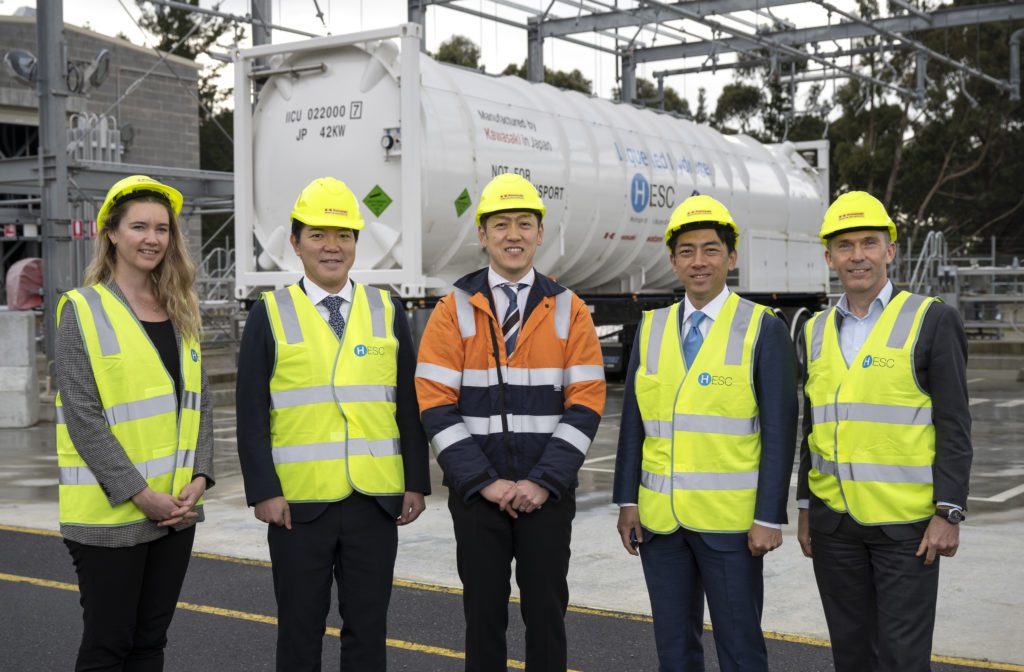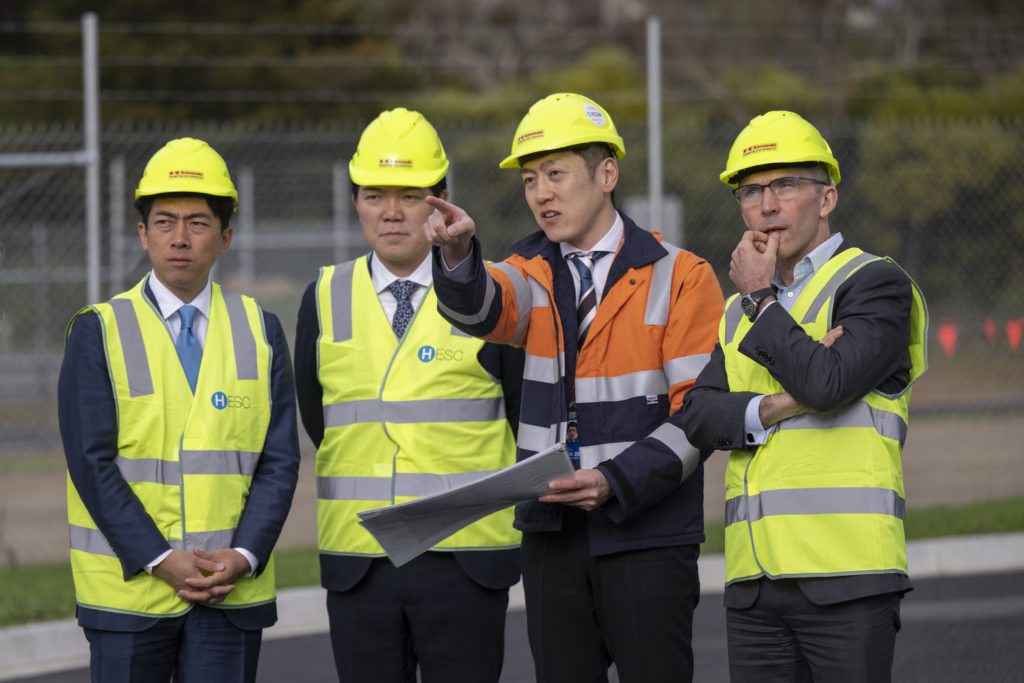The HESC Project’s liquefaction facility in Hastings Victoria, welcomed a senior delegation from the Japanese Government as part of the Department of Foreign Affairs and Trade’s (DFAT) special visits program (SVP). The SVP helps to deepen the relationship between Australia and key international partners.
The visit is another vote of confidence in the HESC project, Australia’s most advanced hydrogen project; and the first project in the world to make, liquefy and transport liquid hydrogen by sea to an international market.
The delegation was led by Cameron Noble, First Secretary, Australian Embassy, Tokyo, DFAT and Jessica Baldock, Australian Government Assistant Director, Japan Political and Strategic Section, DFAT.
The Japanese delegation included, the Hon Koizumi Shinjiro MP, former Minister for the Environment and Deputy Chair, General Council, Liberal Democratic Party and the Hon Nishino Daisuke Member of the House of Representatives. The Hon Koizumi is also the son of former Prime Minister, Koizumi Junichiro.

The group were welcomed to the liquefaction facility by Hirofumi Kawazoe, Hydrogen Energy Australia General Manager. Mr. Kawazoe shared how the facility in Hastings operates with hydrogen gas going through several stages of heat exchangers, with liquefied nitrogen and cryogenic helium gas (as a refrigerant) producing cold energy to cool down the gas and produce liquefied hydrogen at -253 degrees centigrade.

The delegation was particularly interested in the successful completion of the pilot phase and were impressed by the scope of the project and the opportunity it offered for deepening cooperation in the area of energy supply between Japan and Australia.
By producing clean hydrogen safely, through gasification of Latrobe Valley coal with carbon capture and storage, the HESC Project has the potential to create thousands of sustainable jobs in Victoria and a thriving hydrogen export industry with huge local economic benefits.